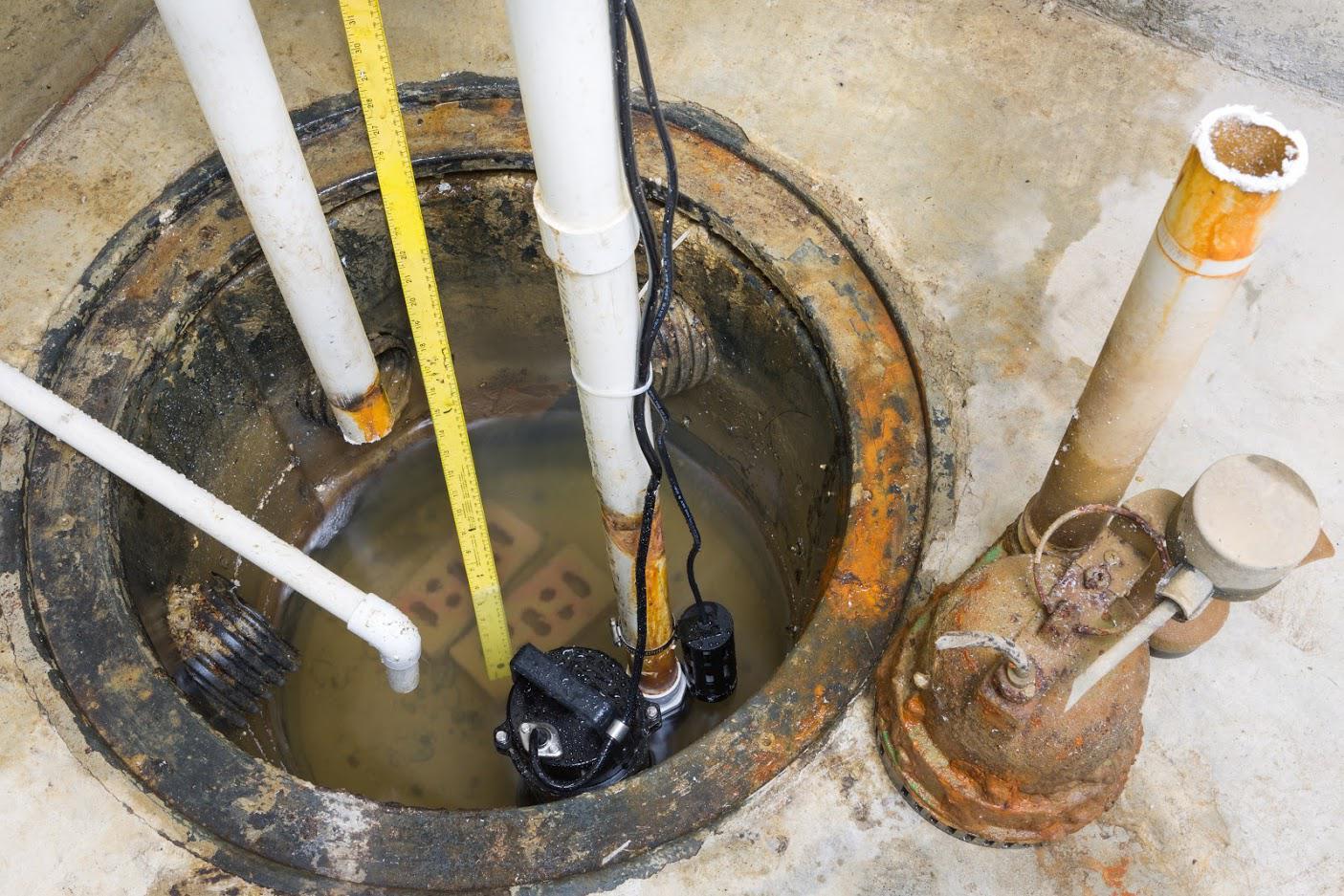Just how do you really feel on the subject of How to Care for Your Sump Pump?

Sump pumps are critical elements in lots of homes, particularly in locations susceptible to flooding or too much moisture. They aid protect against water damage by effectively eliminating excess water from basements or crawl spaces. Nevertheless, like any other appliance, sump pumps require normal upkeep to guarantee they function successfully when needed the most. Cleaning your sump pump is an important part of its maintenance, and understanding just how to do it correctly can conserve you from pricey repair services and prospective disasters.
Intro
Keeping a tidy sump pump is vital for its proper functioning and durability. Neglecting this essential task can bring about clogs, breakdowns, and inevitably, water damage to your building. Therefore, discovering exactly how to clean up a sump pump is vital for home owners who depend on these gadgets to keep their cellars dry and safeguarded.
Indications of a Dirty Sump Pump
Knowing when your sump pump requires cleansing is essential for avoiding potential breakdowns. Some typical indicators that suggest a filthy sump pump include weird noises throughout operation, minimized water circulation, and visible debris in the pit. If you observe any of these signs, it's vital to clean your sump pump immediately to stay clear of any type of further concerns.
Planning for Cleansing
Prior to you start cleaning your sump pump, it's necessary to take some safety and security preventative measures. Start by shutting off the power to the pump to prevent any electric mishaps. In addition, use ideal protective equipment, such as gloves and goggles, to secure on your own from dust, debris, and prospective virus.
Understanding the Sump Pump
Prior to diving right into the cleansing procedure, it's important to have a standard understanding of just how a sump pump functions. Typically installed in a pit or container below the cellar flooring, a sump pump consists of a number of essential components, including a pump, a float switch, and a discharge pipe. When water builds up in the pit, the float button turns on the pump, which then pumps the water out with the discharge pipe, away from the structure's structure.
Detailed Guide to Cleaning Up a Sump Pump
Shutting down the Power
Begin by detaching the power supply to the sump pump to prevent any type of accidents while cleaning.
Looking For Appropriate Performance
Before reinstalling the pump, perform a quick examination to make certain that the float button turns on the pump appropriately. Pour some water into the sump pit and observe the pump's operation. If every little thing is operating properly, you can reassemble the pump and reconnect the power supply.
Eliminating Debris and Dirt
Use a container or a scoop to remove any kind of visible debris, dust, or sediment from the sump pit. Dispose of the particles properly to stop it from obstructing the pump or the discharge pipe.
Cleaning the Pump and Float Switch Over
Once the pit is clear of debris, carefully remove the pump from the pit. Check the pump and the float switch for any kind of indicators of damage or wear. Make use of a soft brush or cloth to clean up the surface areas and eliminate any kind of accumulated grime.
Flushing the System
After cleaning the pump and float button, flush the sump pit with tidy water to eliminate any continuing to be dust or sediment. This will aid guarantee that the pump runs smoothly and effectively.
Maintenance Tips to Maintain Your Sump Pump Clean
Along with routine cleansing, there are a number of maintenance tips you can follow to maintain your sump pump in ideal condition:
- Normal Examination: Examine your sump pump consistently for any kind of indications of wear, damage, or blockages.
- Maintaining the Surrounding Area Clean: Make Sure that the area around the sump pit is devoid of debris, dirt, and obstructions.
- Examining the Pump Regularly: Evaluate your sump pump occasionally by putting water into the pit and observing its operation. This will help you identify any kind of possible concerns before they intensify.
Final thought
Cleaning your sump pump is a critical aspect of its upkeep and guarantees that it runs effectively when you require it the most. By complying with the actions laid out in this guide and incorporating routine upkeep into your routine, you can expand the life expectancy of your sump pump and secure your home from water damage.
6 STEPS ON HOW TO CLEAN A SUMP PUMP PROPERLY
UNDERSTANDING SUMP PUMPS
Your sump pump plays a crucial role in protecting your home by managing and removing excess water. It primarily functions as a “shield”, guarding your basement against the damaging effects of water accumulation. The pump is housed in a sump pit in the lowest part of your basement, and its job is to pump out any water that collects there.
During heavy rainfalls or when snow melts rapidly, water can infiltrate your basement, posing potential risks like flooding, structural damage, and harmful mold growth. Here, the sump pump springs into action, pumping out the intruding water and directing it away from your home.
SAFETY FIRST
Before cleaning, remember to prioritize safety. Disconnect the sump pump from the power source to prevent any accidental electric shocks. Also, wear sturdy gloves to protect your hands from any sharp or dirty components within the pump.
REMOVE THE SUMP PUMP
After ensuring your safety, the next step is to remove the sump pump from its pit. Doing this might require careful maneuvering as you don’t want to damage any pump components. Once removed, clean the sump pit to remove any accumulated debris or sludge.
INSPECT THE PUMP
Inspect the pump for any visible signs of wear or damage. Check the power cord, float switch, and impeller housing. If any components look worn out or damaged, consider replacing them to ensure optimal performance.
CLEAN THE PUMP
Thoroughly clean the pump with warm, soapy water. Make sure to rid it of any dirt, gravel, or other debris that might impede its performance. You can use a toothbrush to clean the small, hard-to-reach parts of the pump.
REINSTALL THE SUMP PUMP
- Reinstall the pump into the sump pit
- Make sure it’s positioned correctly to remove the water effectively
- Once it’s back in place, reconnect it to the power source
TEST THE PUMP
Finally, pour some water into the pit to ensure the pump works correctly. It should start automatically and begin pumping out the water; if it doesn’t, check the power source and the positioning of the pump.
Remember, while cleaning your sump pump is an essential part of home maintenance, hiring a professional plumber for a thorough inspection and cleaning at least once a year is also important. This will ensure that your pump is in optimal condition, ready to protect your home from potential water damage.
BEST PRACTICES FOR CLEANING SUMP PUMP DISCHARGE PIPES
- Regular Inspection: Regularly inspect your discharge pipes, especially during heavy rainfall or snowmelt periods. Look for any signs of blockage or damage. Early detection of problems can prevent serious issues down the line.
- Periodic Cleaning: Over time, sediment and debris can accumulate in the discharge pipes, impeding the flow of water. Regular cleaning helps keep the pipes clear and functioning efficiently. You can use a high-pressure water jet to effectively clean the pipes.
- Insulation During Winter: In colder climates, discharge pipes can freeze, blocking the outflow of water. Protect your discharge pipes from freezing temperatures by insulating them with foam pipe insulation. This will ensure the sump pump can continue to discharge water even in freezing conditions.
- Proper Positioning: The discharge pipe should be positioned to direct water away from your home’s foundation. Improper positioning can lead to water seeping back into the basement. Ensure the pipe is long enough and angled correctly.
- Installation of a Check Valve: A check valve prevents water from flowing back into your sump pit after the pump has pushed it out. Installing a check valve helps maintain the efficiency of your sump pump and reduces the risk of flooding.
- Minimize Pipe Turns: Every curve or turn in the discharge pipe can decrease the efficiency of water flow. By minimizing turns and bends in your discharge pipe, you can increase the efficiency of your sump pump.
https://www.fullspeedplumbing.com/how-to-clean-a-sump-pump-properly9999/

We were made aware of that editorial about How To Effectively Clean A Sump Pump from a good friend on another blog. Remember to set aside a second to distribute this entry if you liked it. Thank you for your time invested reading it.
Free Estimate
Comments on “Our Definitive Guide to Cleaning a Sump Pump”